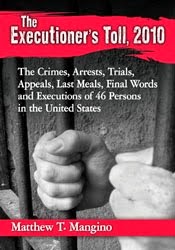Community supervision — generally speaking, our systems of parole and probation — began in the 19th century as a peer-to-peer system of support, writes Peggy McGarry for the Brennan Center for Justice. Community members came forward to assure the court or prison that they could help those convicted of crime to live lawfully outside of jail or prison.
In 1841, for example, John Augustus, a Boston shoemaker, persuaded
the court to release a man to his care, convinced he could cure the man of his
drunkenness. When he was successful, the Boston courts began using community
care to suspend criminal sentences. In 1876, Zebulon Brockway, the warden of
the prison in Elmira, New York, prevailed upon the authorities to release to
community care men whom he believed were “rehabilitated.” In the early 20th
century, states and counties established formalized systems of support and
surveillance as the population of cities and towns grew.
Despite the transition to government agencies with
professional staff and budgets, the fundamentally supportive nature of those
systems remained in place well into the 20th century. For people released from
jail or prison, staff were available to “reintegrate” them, to help them with
the problems that might have led to their crimes in the first place, and to see
that they succeeded. Today, however, many of those agencies are more primed to
find and punish failure than to promote success. The length of supervision and
the nature of the conditions have grown more onerous and punitive, and the
consequences of failure more severe.
So, we ask: what happened?
Civil rights, voting rights, and the Nixon administration
A focus on crime and “urban unrest” — code for fear of
people of color — grew in the aftermath of the upheavals of the 1960s and the
passage of the Civil Rights Act and the Voting Rights Act. Faced with the
potential for people of color having power, the policies and rhetoric of the
Nixon administration, particularly its Southern strategy and “War on Drugs,”
were aimed at making sure that they didn’t. The attention to crime, especially
urban crime, was taken up by the media and by policymakers of both political
parties at the federal and state levels. It led to the passage of harsher
sentencing laws, including the recategorization of offenses to make them
incarceration-eligible, criminalization of more kinds of behaviors, and longer
terms of incarceration.
Prison and jail populations increased, and state and local
budgets were hit hard. The era’s political rhetoric about race and crime made
it much easier to consider those caught up in the system as “other,” rather
than as members of the same community. Instead of an opportunity to restore lives,
release on parole or probation became a privilege that could be taken away. Any
violation, no matter how trivial, could be seen as an affront to the generosity
and forbearance of the court or paroling authority.
The budget hits from the growth in incarceration and the
building of more prisons and jails, with the assistance of nearly $3 billion in
federal funding, meant fewer dollars for community supervision: fewer
staff, larger caseloads, less money for services and a variety of other things
to help those released remain stable in the community. Agencies once structured
to provide assistance were reduced to offering surveillance and enforcement.
The trend to punish harshly did not end with sentencing. Laws were passed at the state and
federal levels that closed off many public benefits that had once been offered
to the newly released, such as public housing and public assistance, making a
successful term of supervision that much harder to achieve.
The changing nature of supervision
As “tough on crime” became the rallying cry in many
political campaigns, and as federal and state legislatures and agencies made
changes to laws and policies, the resulting climate affected the actions and
decisions of both judges and parole boards. Worried about their elections and
appointments, judges looked to longer terms and more rigid “standard”
conditions of supervision as insurance. Although in recent years this has begun
to change, governors often filled parole board positions with political allies
with little education or experience in criminal justice. While they often make
headlines for their release decisions, parole boards also determine the
conditions of supervision and the responses to any violations of them.
Long lists of conditions — the rules for living while on
probation or parole — have become the structure of supervision: surveil for
adherence, punish for violation. Standard conditions do not address the
specific needs of each person but impose the same rules of conduct on everyone.
While some are sensible, most are controls on noncriminal behavior. “Do not
associate with felons” — though the individual’s only place to live might be a
family home or shelter also occupied by people with felony convictions. “Do not
move your place of residence without permission from your parole officer” —
though in the crowded housing of poor communities, frequent moves are more
common than in society at large. “Do not consume alcohol” — though alcohol use
may have been in no way connected to the individual’s crime. “Do not leave the
county without prior approval,” curfews, frequent reporting, and random drug
testing — even if the original crime had nothing to do with drugs. These are
but a few of the common conditions, conditions that can interfere with a
person’s ability to keep a job or fulfill family obligations like childcare.
Apart from standard conditions of release, the judge or
parole board usually imposes additional requirements, including treatment,
classes, electronic monitoring, and others. In many places, the person on
supervision is expected to cover the costs of such programs or even the cost of
the supervision itself. To someone struggling to find housing and
employment, to keep a job or initiate family reunification, these fees can
guarantee failure and reincarceration.
This is the result of the budget reductions for staff and
services that arose from “tough on crime” rhetoric. Politicians denounced
services to those on supervision that “regular” people could not get, while
simultaneously pushing for a “mess up and you’re back” approach. With larger
caseloads and fewer resources, officers had significant motivation to yank a
“difficult” case — a person struggling to comply with conditions — and
recommend revocation and a return to jail or prison. For a judge or parole board,
that recommendation was easy to approve since it was politically safer than
continuing a difficult case — even if the “difficult” circumstance was a
noncriminal violation of conditions.
The transition to law enforcement
As the duties of probation and parole officers became more
about surveillance and enforcement of conditions, rather than the original
concept of community care and reintegration, the recruitment and training of
new officers changed as well. They were no longer hired for their “helping”
skills or orientation. In many places, new officers were trained alongside
institutional corrections officers and law enforcement personnel. The focus of
such training is on finding and responding to crime: surveillance techniques,
use of force, use of firearms, how to subdue the “other.” Beginning in the
mid-1980s, their unions and associations successfully lobbied for arming
supervision officers. While these officers surely do encounter dangerous
situations at times, their desire to be armed was driven mostly by the
difference in the pay and benefits available to those in public safety. The
subsequent arming of probation and parole officers completed the transition of
those agencies from a service orientation to identification as law enforcement.
Without time and resources, with scant encouragement from
their agencies, officers have little reason to work patiently with supervisees
to help them stabilize and be successful. Officers are not given raises or
promotions based on the successes achieved by people on their caseloads, and
the decision to revoke someone back to jail or prison at the first sign of
trouble is affirmed by how often their revocation recommendations are approved.
It’s a process of circular reasoning: the judge, parole board member, or
regional supervisor assumes that the officers in the field know best how to
respond to violations; the officers assume their responses and recommendations
are correct because the judge or parole board member approves them.
These problems have been exacerbated in recent years by the
moves in states to reduce prison spending by making more people eligible for
probation and parole. However, with more people eligible for release on
supervision with longer terms, and as the resources — and the inclination — for
effective and humane supervision have disappeared, revocation has become more
frequent. According to the Pew Trust’s Public Safety Performance Project,
between 2000 and 2018, 28 states increased the length of their probation sentences.
And according to the Council of State Governments, 25 percent of prison
admissions in 2017 were revocations from supervision.
Conclusion
A different approach to community care is critical if we are
to make it a useful tool for preventing future crime and enhancing both family
and community well-being. There have been many efforts in recent decades to
change how paroling authorities make decisions, how supervision is conducted,
and how revocations are handled. We know how to use officer time effectively to
engage with the people on their caseloads, how to assess who needs more time
and who can be left alone, how to intervene in ways that are helpful rather
than punitive, how to encourage stability and success. And we know how to work
with communities, religious organizations, health care and social service
agencies to improve lives, rather than to destroy them.
But that change isn’t happening in enough places. We will
continue to see these trends until we intentionally recruit officers who are
more interested in prevention than enforcement, unless we invest in officer
training that focuses on how to help those on supervision to succeed, unless we
change our reward structure to incentivize those whose clients succeed, and
unless we stop ordering long terms of supervision and onerous conditions.
We have not done these things primarily because we seem to
be content to waste the lives of those who have broken the law. The damage we
continue to do is of little concern to us. They are other. And, apparently, their
lives don’t really matter.








